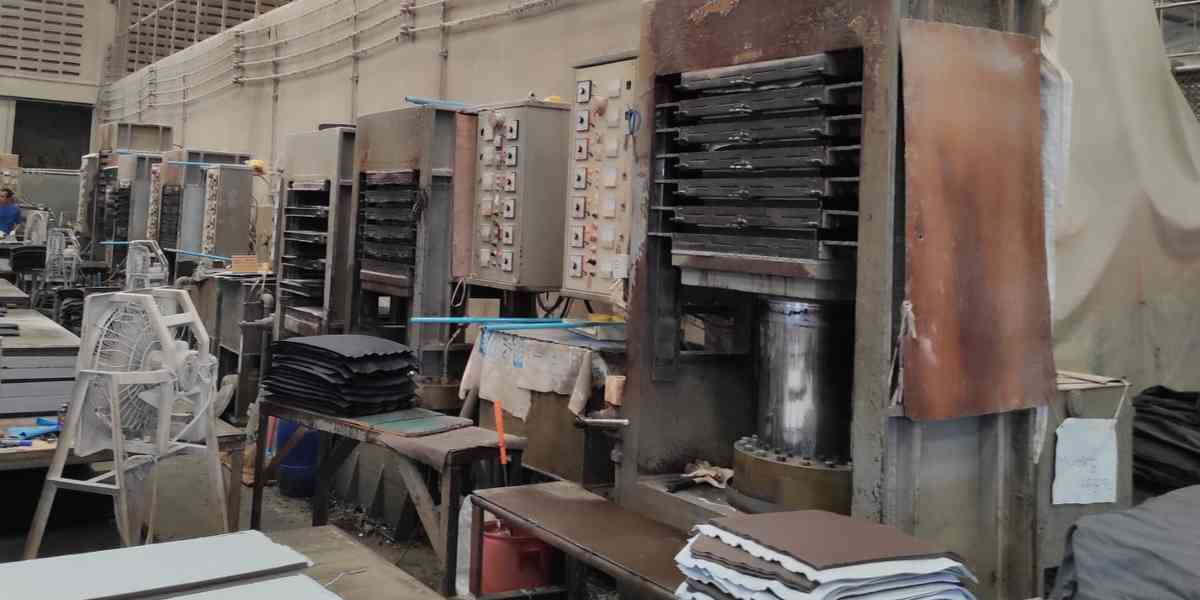Rubber flip-flops are beloved for their comfort and flexibility. But have you ever wondered how these everyday essentials are crafted? In this article, we’ll take you through the step-by-step manufacturing process of rubber flip-flops, from the initial rubber compound to the final polished product. We’ll explore the sophisticated machinery and techniques involved in creating these versatile and stylish footwear options.
- Rubber Compounding: To kickstart the manufacturing process, we carefully prepare a rubber compound. Using a precise weighing scale, we measure out the required quantities of rubber, fillers, additives, and other key ingredients. These components are then meticulously blended using either a Banbury Mixer or Internal Mixer. This precise blending ensures thorough dispersion and uniformity of the rubber compound.
- Pre-Heating and Mixing: The rubber compound undergoes pre-heating to enhance its malleability. Pre-heating equipment, such as heat and steam, is employed to soften the rubber compound further. Following pre-heating, the compound undergoes another mixing cycle in a Banbury Mixer or Internal Mixer to ensure consistent blending.
- Sheet Formation: Once the rubber compound is properly mixed, it’s rolled out into flat sheets of the desired thickness. This sheet formation process is achieved using a Rubber Calendering Machine or Extruder. These machines utilize either a series of rollers (calendering machine) or a die (extruder) to produce continuous sheets.
- Cutting: The sheets of rubber are then meticulously cut into smaller pieces to achieve the desired size and shape for the flip-flops. Cutting machines or hydraulic presses are employed for this purpose. Cutting machines may use blades or laser technology, while hydraulic presses, equipped with cutting dies, ensure precise and consistent cuts.
- Molding: The molding stage is where the Rubber Sheet Press Machine takes center stage. The raw rubber sheet, previously cut to size, is placed between upper and lower plate molds. These molds are designed to impart the flip-flop’s shape, including the sole and straps. The Rubber Sheet Press Machine cooks the raw rubber sheet based on the upper and lower plate molds, applying heat and pressure to initiate vulcanization. This process solidifies and cures the flip-flop shape, as elaborated in our manufacturing process guide.
- Vulcanization: The vulcanization process takes place within the Rubber Sheet Press Machine. The application of heat and pressure triggers vulcanization, allowing the rubber to cross-link and gain improved properties, such as enhanced strength, elasticity, and resistance to wear and tear.
- Cooling and Demolding: After vulcanization, the molds containing the vulcanized rubber flip-flops are cooled using a state-of-the-art cooling system. This reduces the temperature and solidifies the rubber, ensuring the flip-flops retain their desired shape. Once cooled, demolding equipment is employed to open the upper and lower plate molds and safely remove the fully formed rubber flip-flops.
- Finishing and Assembly: To achieve a polished appearance, the flip-flops undergo a finishing process. Trimming equipment is used to remove any excess rubber or flash, resulting in clean edges. Depending on the design and construction requirements, attachment machines or adhesive application equipment are utilized to secure straps to the flip-flops.
- Quality Control and Inspection: Ensuring the flip-flops meet stringent quality standards is of utmost importance. Inspection equipment, such as visual inspection stations and quality control tools, are employed to detect any defects. Skilled workers or automated systems equipped with cameras and sensors conduct thorough inspections to identify issues like air bubbles, irregularities, or poor bonding.
- Packaging and Distribution: The finalized rubber flip-flops are now ready for packaging and distribution. Packaging equipment, including box sealers, bagging machines, or wrapping stations, is utilized to protect the flip-flops during transportation. The packaged flip-flops are then distributed to retailers, ready to be enjoyed by consumers worldwide.
The manufacturing process of rubber flip-flops is a precise and intricate journey, involving various stages and specialized machinery. From the compounding of rubber materials to the molding, vulcanization, and finishing processes, each step contributes to creating comfortable, durable, and stylish footwear. Understanding the manufacturing process behind rubber flip-flops gives us a deeper appreciation for the craftsmanship and technology that goes into producing








